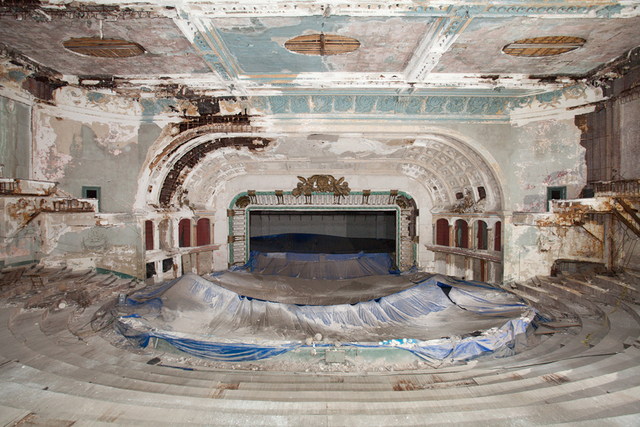
Metropolitan Opera House
858 N. Broad Street,
Philadelphia,
PA
19130
![]() 9 people
favorited this theater
9 people
favorited this theater
Related Websites
Live Nation (Official), The Met Philly (Official)
Additional Info
Operated by: Live Nation
Architects: John Bailey McElfatrick, William H. McElfatrick
Firms: J. B. McElfatrick and Sons
Functions: Concerts, Live Music Venue, Live Performances
Styles: Baroque
Previous Names: Philadelphia Opera House
Phone Numbers:
Box Office:
800.745.3000
Nearby Theaters
News About This Theater
- Apr 20, 2006 — Renovation of Philadelphia's Metropolitan Opera House
Built by Oscar Hammerstein Sr. as the second and final of what was to be a chain of opera houses. The Philadelphia Opera House was opened November 17, 1908. It was the largest theatre of its kind in the world when it opened. Adapted to motion pictures it screened its first movie Mary Pickford in “Pollyanna” on May 8, 1920. In 1928 it was equipped with a Moller 4 manual 39 rank theatre organ. It became a ballroom in the late-1930’s and a sports arena in the 1940’s.
It became a church in 1954 and they moved out in 1988, unable to keep up repairs on the building. The theatre had been added to the National Register of Historic Places on February 1, 1972. It stood unused until 1995 when the church, Holy Ghost Headquarters, purchased the building. They only use the main floor. The building was intact but badly deteriorated.
In 2017 a $56m renovation work began to restore the Metropolitan Opera House to become a live music venue operated by Live Nation and reopened on December 3, 2018 with a concert by Bob Dylan.
Just login to your account and subscribe to this theater.

Recent comments (view all 26 comments)
The Met was damaged by two serious fires in the post-WWII years. On February 5, 1948, flames caused $165,000 in damage to the balconies. This was followed by a four-alarm fire on April 11, 1950, that rose from the base of the stage to the roof and caused an estimated $200,000 in damages. (From Billboard, April 22, 1950, p.25.)
you don’t realize how big this place is until you see it without the tarp that seperates the ground floor .
Signage proposals for the renovation: They’re going for a 1930s look.
Renovation to continue, December 2018 target opening date as music venue.
https://philly.curbed.com/2018/1/26/16935824/philadelphia-metropolitan-opera-house-live-nation-blumenfeld
Reopening December 3 with Bob Dylan. It’s been a long time comin'…
Inga Saffron story with twelve new and old photos.
The website for this theatre is www.themetphilly.com In the March issue of Opera News Magazine there is an ad for a concert here next month.
The theatre also was equipped with an M.P. Moller four manual, 39-rank theatre organ, built in 1928, opus #5315. It was the second largest Moller theatre organ ever built, behind the Atlanta Fox Moller (4m/42r) that was built in 1929, opus #5566. Sadly, the Met organ was to be donated to an institution in the western United States, but was destroyed by fire. Gladly, the Atlanta organ still lives on and is currently having its console rebuilt, with a “temporary” console standing in.
The renovated theatre looks beautiful!
Good photo of the auditorium from stage at the official website (scroll down for the photo): https://themetphilly.com/info/
Some nice photos in very late stages of renovation at curbed.com:
https://philly.curbed.com/2018/12/4/18125587/met-philly-reopens-new-look-art-deco-style
Their official website: https://themetphilly.com/
What may have been the first instance of the Metropolitan Opera House being used for movies was noted in this item from the “Philadelphia Pointers” column of Moving Picture World for April 3, 1920:
Mary Pickford was 27 years old when she portrayed Eleanor H. Porter’s 12 year old heroine. “Pollyanna” was Pickford’s first film for her recently established United Artists studio. A blockbuster for its time, the film had a budget of $300,000 and grossed $1.1 million worldwide in its initial theatrical run. Now in the public domain, at least in the US, multiple copies have been uploaded to YouTube where it can be watched at no charge.